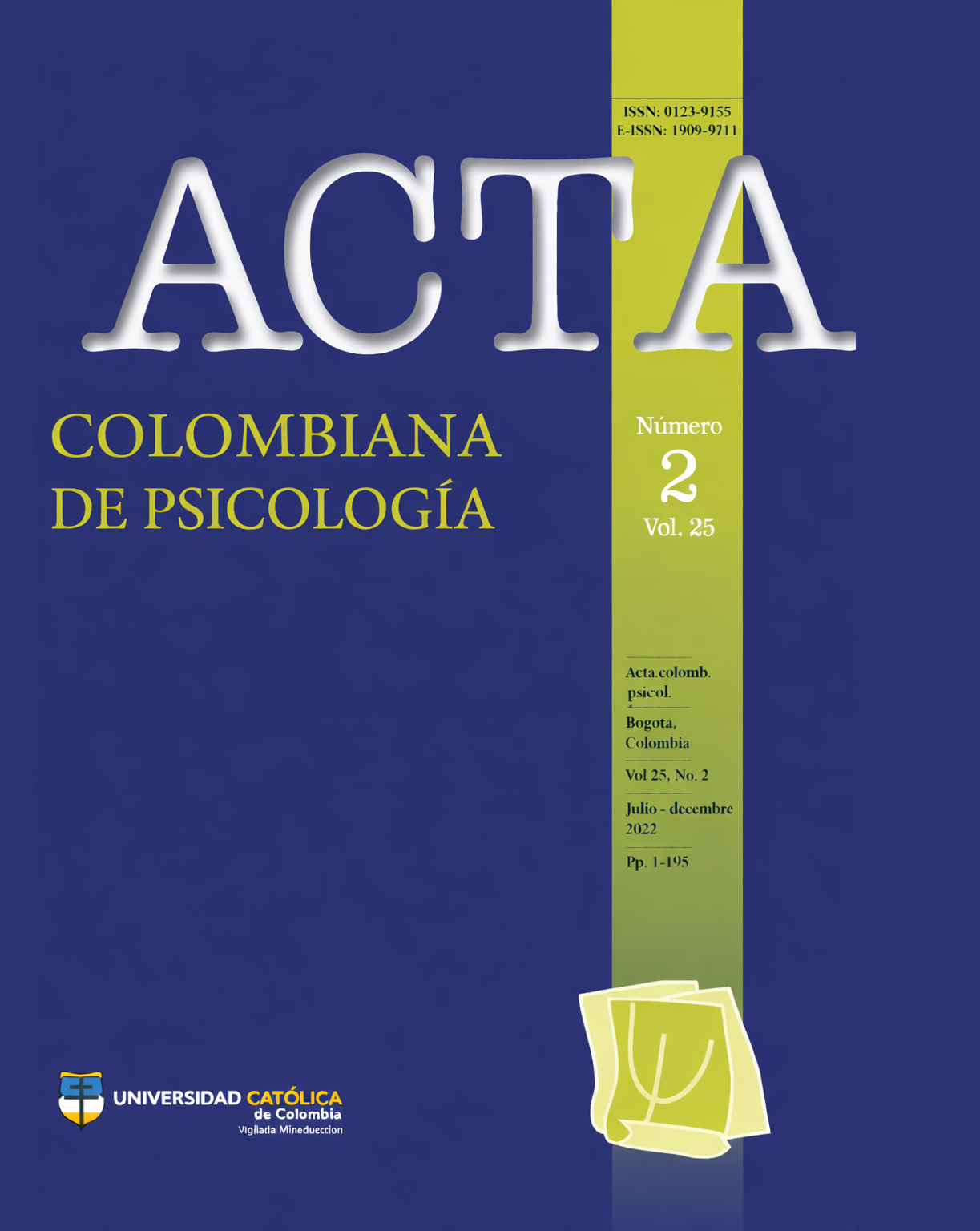
Esta obra está bajo una licencia internacional Creative Commons Atribución-NoComercial-CompartirIgual 4.0.
Los autores que publiquen en esta Revista aceptan las siguientes condiciones:
Acta Colombiana de Psicología se guía por las normas internacionales sobre propiedad intelectual y derechos de autor, y de manera particular el artículo 58 de la Constitución Política de Colombia, la Ley 23 de 1982 y el Acuerdo 172 del 30 de Septiembre de 2010 (Reglamento de propiedad intelectual de la Universidad Católica de Colombia)
Los autores conservan los derechos de autor y ceden a la Revista el derecho de la primera publicación, con el trabajo registrado con la Este obra está bajo una licencia de Creative Commons Reconocimiento-NoComercial-CompartirIgual 4.0 Internacional, que permite a terceros utilizar lo publicado siempre que mencionen la autoría del trabajo y a la primera publicación en esta Revista.

Citas
Datta, S. R., Anderson, D. J., Branson, K., Perona, P., & Leifer, A. (2019). Computational Neuroethology: A Call to Action. Neuron, 104(1), 11-24. https://doi.org/10.1016/j.neuron.2019.09.038
Escobar, R., & Pérez‐Herrera, C. A. (2015). Low‐cost USB interface for operant research using Arduino and Visual Basic. Journal of the Experimental Analysis of Behavior, 103(2), 427-435. https://doi.org/10.1002/jeab.135
Henton, W. W., & Iversen, I. H. (1978). Classical and Operant Conditioning: A Response Pattern Analysis. Springer-Verlag. https://doi.org/10.1007/978-1-4612-6310-4
Jarmolowicz, D. P., Greer, B. D., Killeen, P. R., & Huskinson, S. L. (2021). Applied Quantitative Analysis of Behavior: What It Is, and Why We Care—Introduction to the Special Section. Perspectives on Behavior Science, 44(4), 503–516. https://doi.org/10.1007/s40614-021-00323-w
León, A., Tamayo, J. T., Eslava, V. H., Hernández, P. T., Garrido, M. L. A., Linares, C. A. H., & Navarro, E. E. (2020). MOTUS: software para el análisis conductual de patrones de desplazamiento. Revista Mexicana de Análisis de la Conducta, 46(1), 222-242. http://dx.doi.org/10.5514/rmac.v46.i1.76960
León, A., Hernandez, V., Lopez, J., Guzman, I., Quintero, V., Toledo, P., Avendaño-Garrido, M. L., Hernandez-Linares, C. A., & Escamilla, E. (2021). Beyond Single Discrete Responses: An Integrative and Multidimensional Analysis of Behavioral Dynamics Assisted by Machine Learning. Frontiers in behavioral neuroscience, 15, 681771. https://doi.org/10.3389/fnbeh.2021.681771
Mathis, A., Mamidanna, P., Cury, K. M., Abe, T., Murthy, V. N., Mathis, M. W., & Bethge, M. (2018). DeepLabCut: Markerless pose estimation of user-defined body parts with deep learning. Nature Neuroscience, 21(9), 1281-1289. https://doi.org/10.1038/s41593-018-0209-y
Mathis, M. W., & Mathis, A. (2020). Deep learning tools for the measurement of animal behavior in neuroscience. Current opinion in neurobiology, 60, 1-11. https://doi.org/10.1016/j.conb.2019.10.008
Timberlake, W. (2004). Is the Operant Contingency Enough for a Science of Purposive Behavior? Behavior and Philosophy, 32(1), 197-229. http://www.jstor.org/stable/27759478
Walter, T., & Couzin, I. D. (2021). TRex, a fast multi-animal tracking system with markerless identification, and 2D estimation of posture and visual fields. ELife, 10, e64000. https://doi.org/10.7554/eLife.64000
Watson, J. B. (1914). Behavior: An introduction to comparative psychology. Henry Holt and Co. https://doi.org/10.1037/10868-000































